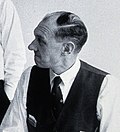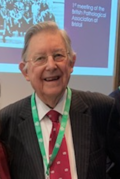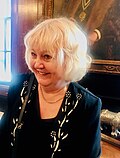| Years | Image | Name | Comments |
|---|
| 1912–1913 |  | Sir William Osler [1] | British Canadian, known as "king of pranks", Osler was one of the "big four" founding members of the Johns Hopkins Hospital where he had arrived in 1888 as physician in chief. He is best remembered for establishing the medical residency programme, taking medical students to the bedside, writing major textbooks [2] and whilst in England as Regius Professor of Medicine at Oxford, founding the history of medicine section at the RSM in 1912. Raymond Crawfurd described him as a "magnet" in attracting members. Undeterred by opposing Sir Richard Douglas Powell who felt the Society had too many sections already, Osler meticulously planned the establishment of the History section, individually writing to more than 160 potential members. He considered the section one of his better achievements in his later years and his wish was for it to be a common meeting place for "scholars, students and all those who feel that the study of the history of medicine has a value in education". [1] |
| 1913–1916 |  | Sir Norman Moore, 1st Baronet [1] | British physician, lecturer in anatomy and pathology and historian, Moore is best known for his connection with the Royal College of Physicians, GMC and his writings on history of medicine. [3] To his disappointment he did not make the first president as Osler had recommended. [1] |
| 1916–1918 | | Sir Raymond Henry Payne Crawfurd [4] | Crawfurd graduated in classics from New College, Oxford in 1888, before studying medicine. Primarily physician and lecturer at King's College, he became its medical Dean and major player in moving the hospital to Denmark Hill, for which he was knighted in 1933. Due to chronic illness, he left active medicine and wrote on history of medicine, publications including, The Last Days of Charles II (1909), The King's Evil (1911) and Plague and Pestilence in Literature and Art (1914). [5] |
| 1918–1919 |  | Sir D'Arcy Power [6] | Physician at St Bartholemew's, Power was a prolific writer of medical history. [7] He later recalled how the section was "more like a family than an integral part of a great scientific society". [1] |
| 1920–1922 |  | Professor Charles Singer [8] | Physician, pathologist and historian, he was invited to Oxford by William Osler in 1914, later becoming professor in history of medicine at University of London in 1930. One of the original history section members, Singer retained his position as editorial representative for twenty three years and maintained a high quality of the section's publications. He supported refugee scholars fleeing Nazi Europe and is known for his many publications of short histories. He kept a miniature set of traffic lights to control lengths of speakers, switching to red when they became dull or prolonged. [1] [9] |
| 1922–1924 | | Sir Arnold Chaplin [10] | After studying at St. Bartholomew's Hospital Singer's primary appointment was at the City of London Hospital for Diseases of the Chest, where he remained for the next twenty-nine years. He co-authored the textbook on Fibroid Diseases of the Lung, and The Science and Art of Prescribing and wrote The Illness and Death of Napoleon Bonaparte (1913). He loved old books and prints, and became Harveian Librarian at the Royal College of Physicians. [10] [11] |
| 1924–1926 | | John Davy Rolleston [12] | An original member of the Section, he was a member of the council, secretary and president. [13] |
| 1926–1928 | | Walter G. Spencer [14] | Known as "The Historian of Westminster" by fellow medics |
| 1928–1930 |  | Herbert R. Spencer [15] | Obstetrician who wrote about William Harvey, midwifery and external cephalic version. [15] |
| 1930–1931 |  | Sir Humphry Rolleston [16] | 57th president of RSM. [16] |
|




























